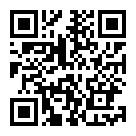語言研究專區Linguistics
破解虛擬語言
Breaking the code of Fictional Languages
While some languages die out, others are created. In the novel The Lord of the Rings, J. R. R. Tolkien created a number of fictional languages, notably, the Elvish languages of Quenya and Sindarin. These languages are thought to be so complete that they are spoken by fans all over the world.
The focus on linguistics have conventionally been placed on real life languages. However, there is value in researching fictional languages. Why do people speak these fictional languages? How are these fictional languages created? These are questions that we hope to answer through this research.
There are numerous fictional languages that are thought to be complete, but we chose to research on Quenya, as it is thought to be the most complete out of all.
1. Background/Motivation
While some languages die out, others are created. In the novel The Lord of the Rings, J. R. R. Tolkien created a number of fictional languages, notably, the Elvish languages of Quenya and Sindarin. These languages are thought to be so complete that they are spoken by fans all over the world.
The focus on linguistics have conventionally been placed on real life languages. However, there is value in researching fictional languages. Why do people speak these fictional languages? How are these fictional languages created? These are questions that we hope to answer through this research.
There are numerous fictional languages that are thought to be complete, but we chose to research on Quenya, as it is thought to be the most complete out of all.
2. Research question
Understanding the morphology of words and the syntax of the fictional language Quenya, while drawing a comparison to English and German.
3. Method
A bottom-up approach will be applied for this research. Just like breaking the code of a new real life language. We will draw up questions to help us understand the morphology and syntax of Quenya.
Fan built lexicons, dictionaries and translators are readily available online. Through the use of this resources, they will play the role of a Quenya speaker, providing us with the answers we require. We will then analyse these patterns to give a better understanding of the Quenya language.
Quenya is constructed from a division of Old Norse, which is also a division from the North Germanic language, while English evolved from the West Germanic language. Therefore, we will be able to draw a comparison between the morphology and syntax of English, German and Quenya to better our understanding of Quenya.
4. Expectations
Through this research, we aim to achieve the following.
Understand the morphology and syntax of the fictional language Quenya.
Draw a comparison with English and German to gain a better understanding of Quenya.
Understand how fictional languages are created and its restrictions.
There are certain limitations to this research. As the lexicons and dictionaries are fan-built, there may be some human errors due to the lack in research. We will also be using Quenya, as written in the book or from the movie, as a check to the the existing resources. We also understand that in the fictional world, some words or expressions may not be available due to the culture a country has.
5. Discussion directions
https://www.britannica.com/list/6-fictional-languages-you-can-really-learn
http://www.nevrast.net/dictionary.html
https://www.ethnologue.com/
http://www.sssscomic.com/comic.php?page=196
https://en.wikipedia.org/wiki/The_Etymologies_(Tolkien)

回到最上層
語言與生活文化
台灣語言使用所反映的社會現象

台灣這塊土地乘載許多來自不同文化的移民,而我們都知道,一個語言是會持續改變而「演化」的,若將生物學家達爾文的生物演化概念帶入語言學,其代表著相對弱勢的語言會漸漸地被強勢的語言競爭掉。但除了彼此相互競爭之外,不同的語言卻也能夠相互的融合、承載,進而衍伸出新的語彙來,像是許多台灣人都會不知不覺的脫口出「日式『台語』」,例如:「歐都拜」即オートバイ、「斯哩控」即シリコン、「空固力」即コンクリート、「秀抖」即ショート……等,其他尚有諸如:「韓都嚕」、「紅不讓」……等不勝枚舉的例子,然透過仔細的歸納與分析後,其實我們不難發現,以上這些「日式『台語』」其實都是從「英譯日文」進一步轉變而來的,但為甚麼在普遍英語能力也不錯的台灣社會中,在「台語」方面會選擇承襲這些日文式發音的語彙,並很自然的將這些「英譯日文式語彙」直接應用在現代日常生活中呢?難道不能以正確的英語發音來重新翻譯此類「日式『台語』」語彙嗎?我相信若家中來了一個水電師傅、或是臨時遇到一位機車行老闆,若直接跟他們講「斯哩控」一定會比「silicon」來的親切,而講「歐都拜」也會比「auto-bike」來的直接。然而事實上,日本人是因為在自身的語言上沒有在使用捲舌音,為了方便外來語的學習,才引入了片假名,並開發了特殊的拗音,最後這些外來語才能以日語發音的方式融入日語詞彙。然而,在「台語」,甚至是「中文」的使用上,並無出現捲舌音這部分的問題,但在生活中,我們卻仍偏好於日常對話中使用這些「日語發音式的外來語」 (當然仍有例外,如 : beer,日文為ビール,中文為啤酒,但於台語中仍稱「必魯」),而非以台灣本土的語言發音方式給予重新命名。我認為這現象也許和日本曾在台灣推行過的「日文運動」有關吧!由此可見,在語言的議題上,除了純粹的於語音學與音韻學方面有考量之外,其中更包含了許多歷史、社會文化,甚至是政治上的影響因素。
此外,語言的發展與生活習慣之間有著密切的關係,即語言使用者的生活環境影響了其說話的方式,然在台灣年輕人所常用的詞彙中,很多都是從網路文章所衍伸出來的,隨著現代電子與資訊科技的發展,年輕人非常容易於以BBS架設的PTT之網路平台上做言論交流,針對許多熱門的社會議題,其內的關鍵字常會大眾的時下流行語,即使某些人沒有在瀏覽PTT,但他們也會跟著使用這些語彙,例如:「淡定紅茶」、「天大地大臺科大」、「689」、「完全沒有畫面」……等。除此之外,部分的流行語則是出自年輕朋友所時常接觸的大眾媒體,如:偶像劇、電影、漫畫、流行音樂、電視新聞……等,例如:用來比喻台北人的「天龍人」出自日本航海王漫畫、泛稱PTT使用者的「鄉民」出自電影九品芝麻官、製造笑點用的「我難過」與「雅量背影出師表」分別出自偶像流行歌曲名與高中國文課本中……等。有時對一種社會事實的描述,或對大眾普遍心理狀態的告白與諷刺亦可能成為流行詞彙,例如:「記者快來抄」、「沒圖沒真相」、「媽!我在這」……等,當然有某些流行語是純粹出自對媒體慣用介面的形容,像是:「推文」、「紫爆」、「水桶」、「爬文」、「樓上」……等。
然而,流行語彙的形成機制仍具非常多的變化,例如:「魯蛇」音譯自英文「loser」、「雷」音譯自日文ねたばれ、「科科」源自注音符號「ㄎㄎ」、「ㄈㄈ尺」以象形文方式在模仿英文CCR、「北車」縮寫自「台北車站」、「搶頭香」之民間習俗行為可喻為搶得先機、「肥宅」為大眾對網路成癮者的假想……等,由此可知,越是能中肯描述、被方便使用,甚至越具創意的文字組合,越易流行。
而於視覺方面,除了文字符號外,圖像也可以是語言表達的一種方式,例如國旗就傳達了一些文化與精神意義,而透過交通號誌上的圖案,行路人也能被引導在正確的道路上,當然大眾們也可以利用公共場中出現的各種指示牌來輕易地找出「男廁」、「女廁」、「電梯」、「出口」……等設施的位置。另在聽覺方面,除了口語表達之外的聲音,亦能被當作語言來做溝通,例如:雷聲代表著窗外將要下雨了、消防車的警笛聲代表附近有意外發生……等,甚至我們能透過敲擊電話上不同數字按鈕時所發出的聲音來判斷所撥出號碼,以及像摩斯密碼能利用音節的長短來形成語言。其他於觸覺、嗅覺、味覺方面,亦有可能形成一種語言,只要其能創造出有意義的變化,並透過媒介傳遞。


